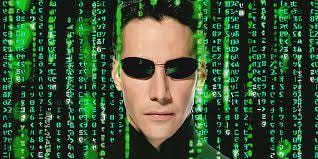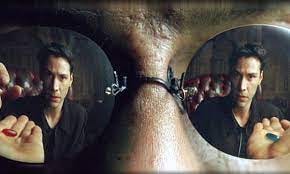Reality is Images Stitched in Sequence
Keanu Reeves took a pill and saw the code. Here's another way.
Time comes into it.
Say it. Say it.
The universe is made of stories,
not of atoms.
- Muriel Rukeyser, from “The Speed of Darkness”
I was not a big Keanu Reeves fan in March of 1999.
As far as I was concerned, he was at his best in the Bill and Ted movies of the 1980’s and he needed to stay in his lane. When I saw the preview for The Matrix in March of 1999, I liked the idea of the movie but resisted Keanu as the lead. I remember feeling strongly about this. Besides, I was very busy preparing for Y2K which was an exciting (and then forgettable) chapter in world history where the “Millennium bug” was going to crash all computers on January 1, 2000. Movies, in general, seemed trivial compared to the drama that was clearly about to unfold.
So when I finally saw the movie, I carried with me a measure of apprehension and even cynicism. But the movie blew me away. For those of you who have not seen the movie (how can this be possible?), there are spoilers ahead.
There is a famous scene at the end of the movie where Keanu Reeves’ character dies, falls to the ground and then moments later, comes back to life. He gracefully stands up and faces the three “bad guy” agents who thought they had killed him. They are momentarily confused and then proceed to shoot him again.
Keanu Reeves quietly says, “No.”
Then he seems to psychically slow the bullets down until they freeze before him. Like an innocent child, he plucks one of the bullets out from its suspended state and drops it to the ground. It is at that moment we the viewers get to see through his eyes: everything he sees is made of neon green computer code. The hallway, the trash on the floor, even the three bad-guy agents are all constructed out of little green symbols, organized in such a way as to create the reality he had been living in. He still lives in it—but now he sees the truth. Everything in his reality is, actually, made of code. He could see the matrix.
This is what I’ve learned about the reality I live in.
The little green symbols are images. The images have their own place in the grand alphabet of life. They are independent and yet a part of a vast code. An in this world made of stories, narrative is the code.
The trick, then, is to figure out how to take the red pill (or blue - I can’t remember). How do we wake up? How do we see the code? All I know is that I can see it, and when you spend as much time as I have telling stories, I think its inevitable.
I see patterns. I see themes. I see people reaching up and choosing stories to repeat, and repeat, and repeat. I see them miss other stories completely. Those stories are invisible to them.
But the most impressive aspect of our swimming in stories is that we insist that the stories are complete. That they showed up integrated and whole - like a corporation or a city. But obviously, this is a silly idea. Corporations and cities are complex gatherings of so many variables. So many people each doing their thing and somehow - quite magically - we end up together working toward a common purpose.
This is how a story works.
It is made up of images. Complex images that have their own thing going. We simply stitch it to another image. And then another. And before long we can’t see the trees anymore. Only the forest. Only the story. Only the city.
And we forget that it is all code. We mistake the matrix for the code.
So taking the red pill (or blue, I forget) is telling stories. Telling LOTS of stories. And eventually you will see the code. You will see the stitched together images and feelings.
And then you will be able to dodge bullets, fly and look wicked cool.





Thanks for a thought provoking article!
I like the idea of a purple pill mentioned by Rick, that we can see the patterns and yet enjoy living in the beauty of the illusion too.
I too enjoy noticing the stories that form and direct society, humankind's most creative and shared art project. The brush strokes become visible if you are close up, or like you hinted at, embody the role of the painter and thus see the process, the paint, the canvas, and the intentions (narrative) that influences everything.
Fantastic article. Personally, The Matrix has been an important film in my life for years, and I loved reading this take on its imagery and themes. 💙